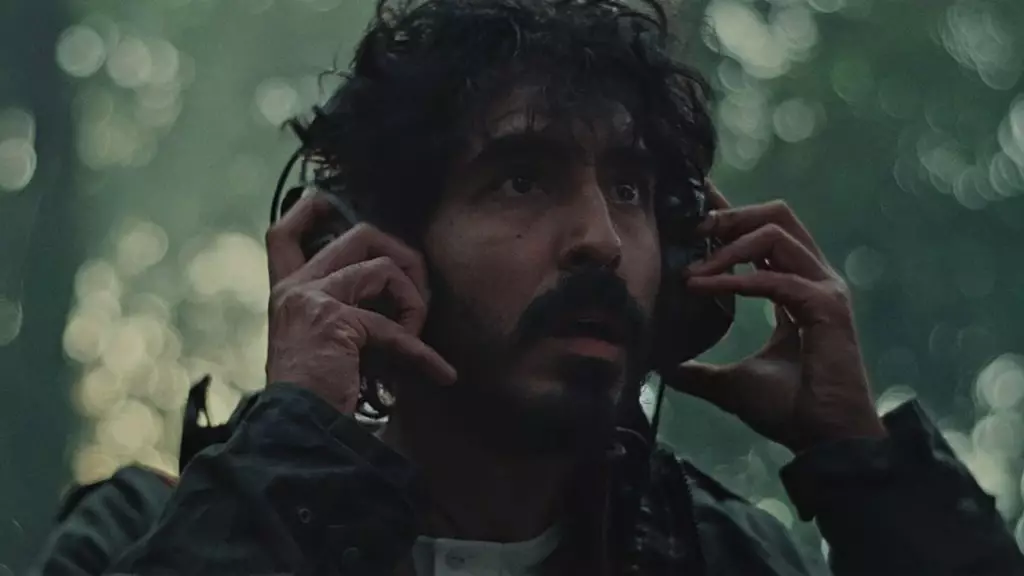In “Rabbit Trap,” British filmmaker Bryn Chaney makes a compelling mark with his feature film debut, blending elements of Celtic mythology with an evocative soundscape to reveal the intricacies of human emotion and the struggles that often lie beneath the surface. Set in the transformative backdrop of the Welsh countryside in 1973, the film stars Dev Patel and Rosy McEwen as Darcy and Daphne, a couple enmeshed in the music scene, who retreat to an isolated cabin hoping to find inspiration for their next album. Their aim is to connect with nature and rejuvenate their creative spirits, but what begins as a journey into musical exploration unfolds into a gripping tale interwoven with mystical encounters and emotional struggles.
The innovative use of sound in “Rabbit Trap” is one of its most striking features. The film showcases an intimate relationship between sound and emotion, portraying sound not just as an auditory experience, but as a potent storyteller that can conjure up mysteries, fears, and even neurological disturbances. Darcy’s accidental capture of sound not intended for human ears acts as the catalyst that brews a tempest of emotional upheaval. It introduces an otherworldly presence, suggesting that the very environment they inhabit is alive with ancient energies. The sound design, crafted by Graham Reznick, invites audiences to immerse themselves deeply, making them acutely aware of the nuances that sound can capture, from the rustling of leaves to the distant echoes of forgotten stories.
The film’s sonic landscape is complemented beautifully by Lucrecia Dalt’s hauntingly exquisite score. This musical composition augments the emotional gravity of critical scenes, enhancing Daphne’s artistic awakening and the intimate chemistry shared between the couple. In this creative environment, sound transcends its conventional role; it becomes a character in its own right, guiding viewers through the highs and lows of the couple’s journey.
The dynamics between Darcy and Daphne highlight a complex, beautifully rendered relationship that oscillates between collaboration and tension. As the story unfolds, Daphne’s artistic breakthrough is not merely a personal victory but a shared revelation that encapsulates their interdependence as both lovers and creative partners. The film’s intimate portrayal of their relationship reveals the intricate layers of human connection—the unspoken words, the vulnerability, and even moments of despair that can both bind and tear apart.
While embracing the euphoria of creation, the darker undertones of Darcy’s struggle with sleep paralysis emerge as a haunting element within the narrative. This psychological turmoil represents a broader exploration of the shadows that lurk in the human psyche. It becomes a mirror reflecting Daphne’s own artistic insecurities and fears, raising questions about whether love can always provide the necessary support in the face of overwhelming inner darkness.
The introduction of a mysterious child, portrayed adeptly by Jade Croot, serves as a pivotal turning point in “Rabbit Trap.” The child not only represents innocence and curiosity but also acts as a conduit to the rich traditions of local folklore. Through her engagement with Darcy and Daphne, she educates them on age-old stories and introduces elements of magic that challenge their perceptions of reality and creativity. This interaction enriches the narrative while simultaneously establishing the child as a guardian of hidden truths—an embodiment of the forest’s voice, which has been silent for too long.
Their shared experiences tend to reflect the themes surrounding parenthood, responsibility, and the burden of legacy. As the couple begins to nurture the child, they find themselves increasingly entwined in a complex web of emotional connections, tinged with a growing sense of dread that amplifies as the film progresses. This dynamic serves as an exploration of the challenges of caring not only for others but also for one’s creative spirit.
Ultimately, “Rabbit Trap” transcends its narrative confines, delving into the emotional turmoil and existential struggles that craft the human experience. Chaney’s film marries folklore with sound in a way that resonates deeply, challenging viewers to acknowledge the shadows that dance within the realm of creativity and connection. With powerful performances from Patel and McEwen, the film stands as a poignant exploration of the layers that define not only artistic inspiration but the bonds that tether individuals to their pasts. As it unfolds, “Rabbit Trap” invites audiences into a labyrinth of sound and intuition, leaving them to ponder the echoes of what remains unspoken.

